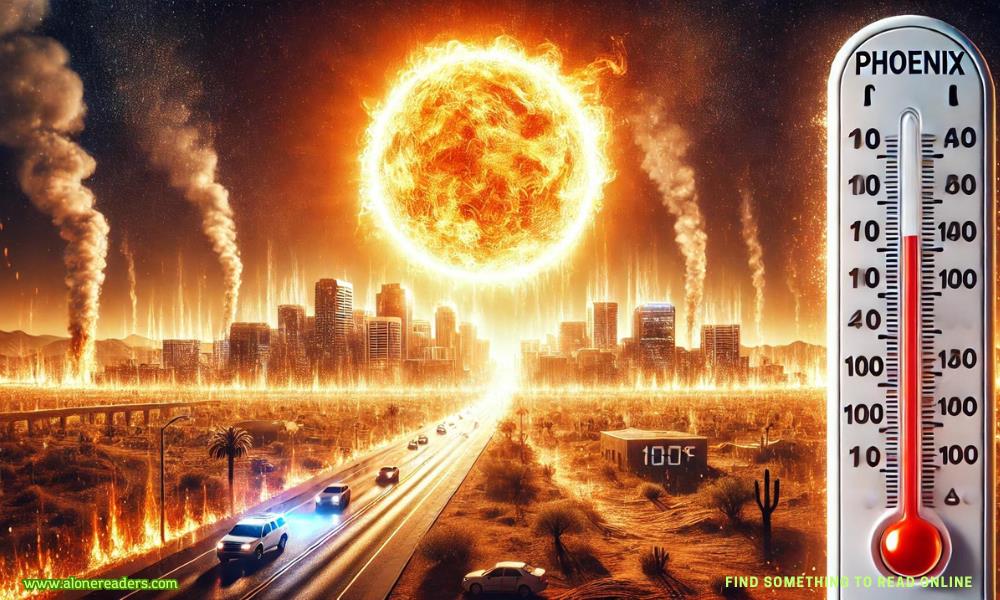
Phoenix, Arizona, a city known for its hot summers, has recently shattered records by experiencing 100 consecutive days of temperatures over 100°F. This unprecedented heatwave has gripped the city, making global headlines and raising serious concerns about the impact of extreme heat on public health, infrastructure, and the environment. The relentless heat, beginning in late spring and stretching into autumn, has not only tested the endurance of Phoenix’s residents but also highlighted the ongoing challenges posed by climate change in urban settings.
The summer of 2024 will be remembered as one of the most extreme in Phoenix's history. For over three months, the city's thermometer failed to dip below 100°F during the day. Nighttime temperatures, which typically provide some relief, remained uncomfortably warm, often staying in the high 80s or low 90s. The effects of this heatwave have been felt in all aspects of life. Residents have struggled to stay cool, with air conditioning systems running non-stop, placing a significant strain on the city’s power grid. Local officials have urged residents to conserve energy where possible, but the demand for electricity has remained high as people try to stay safe indoors.
Heatwaves of this magnitude are not only uncomfortable but also dangerous. Medical experts have warned of the heightened risk of heat-related illnesses, such as heatstroke and dehydration. Vulnerable populations, including the elderly, children, and those with pre-existing health conditions, have been particularly at risk. Hospitals in Phoenix have reported an increase in admissions related to the extreme heat, and tragically, some heat-related deaths have been recorded. The city's cooling centers, established to provide relief for those without access to air conditioning, have seen a surge in visitors, yet they remain limited in capacity compared to the sheer number of people affected by the heat.
The environmental impact of this prolonged heatwave is another area of concern. Phoenix’s desert ecosystem, though accustomed to high temperatures, has shown signs of stress. Local wildlife has been forced to adapt to the extreme conditions, with some species struggling to find water and food. Urban greenery, already sparse in this desert city, has suffered as well, with many trees and plants wilting under the relentless sun. Even the famous saguaro cacti, which are symbols of the Arizona desert, have struggled in the face of such extreme temperatures.
The city’s infrastructure has also been tested by the prolonged heat. Roads have buckled in some areas due to the constant exposure to extreme temperatures, leading to dangerous driving conditions and costly repairs. Public transport systems have faced challenges as well, with the heat causing delays and breakdowns. City planners and engineers are increasingly being forced to reconsider how Phoenix's infrastructure can withstand such extreme weather events in the future, leading to discussions about heat-resistant materials and urban cooling solutions.
In the face of this record-breaking heatwave, many residents have taken to social media to share their experiences. From melting street signs to cooking eggs on sidewalks, the extreme heat has given rise to a mixture of frustration, humor, and resilience. However, beneath these lighthearted moments lies a deeper concern about the future. Climate experts have warned that heatwaves like the one in Phoenix are likely to become more frequent and more intense in the coming years. As global temperatures continue to rise due to human-induced climate change, cities like Phoenix will face increasing challenges in adapting to this new normal.
Local officials have recognized the need for long-term solutions. Phoenix has already implemented several initiatives to combat extreme heat, including planting more trees to increase shade, installing reflective surfaces on buildings to reduce heat absorption, and expanding public cooling centers. However, these measures may not be enough to fully mitigate the effects of such prolonged heatwaves in the future. Experts have called for even more aggressive actions, such as transitioning to renewable energy sources, improving building codes to make homes and offices more heat-resistant, and creating heat-action plans that better protect vulnerable communities.
The economic impact of the heatwave is also being felt across the city. Businesses that rely on outdoor activities, such as tourism and construction, have seen significant losses as workers and visitors alike are forced to stay indoors to avoid the heat. For those who must work outside, such as landscapers and construction crews, the prolonged exposure to extreme temperatures has posed serious health risks, despite efforts to schedule work during the cooler parts of the day. The agricultural sector in surrounding areas has also been affected, with crops struggling to survive in the oppressive heat, leading to reduced yields and financial losses for farmers.
As Phoenix emerges from this historic heatwave, the city faces critical questions about its future. Can a city built in the heart of the desert continue to thrive in an era of rising global temperatures? What steps can be taken to protect residents, infrastructure, and the environment from the next inevitable heatwave? These are the challenges that Phoenix, and many other cities around the world, must confront as the effects of climate change become increasingly apparent.
In the end, the record heat in Phoenix serves as a stark reminder of the power of nature and the urgent need for action to address climate change. While the city has demonstrated resilience in the face of such extreme conditions, the future will require even greater efforts to ensure that Phoenix remains livable for generations to come. The lessons learned from this unprecedented heatwave may help guide other cities facing similar challenges, as the world grapples with the realities of a warming planet.